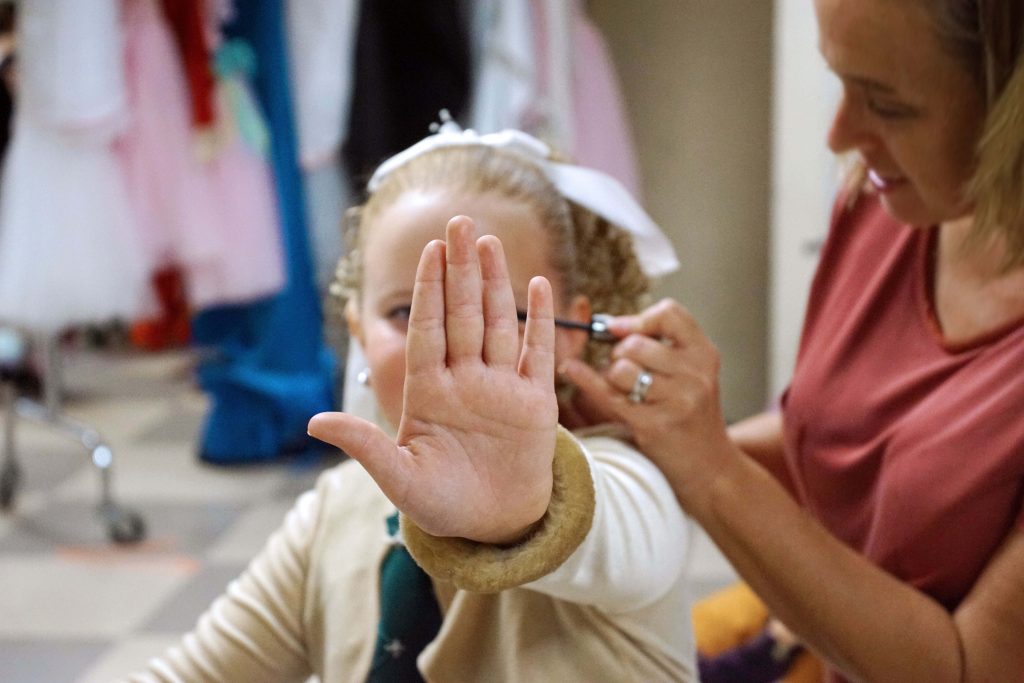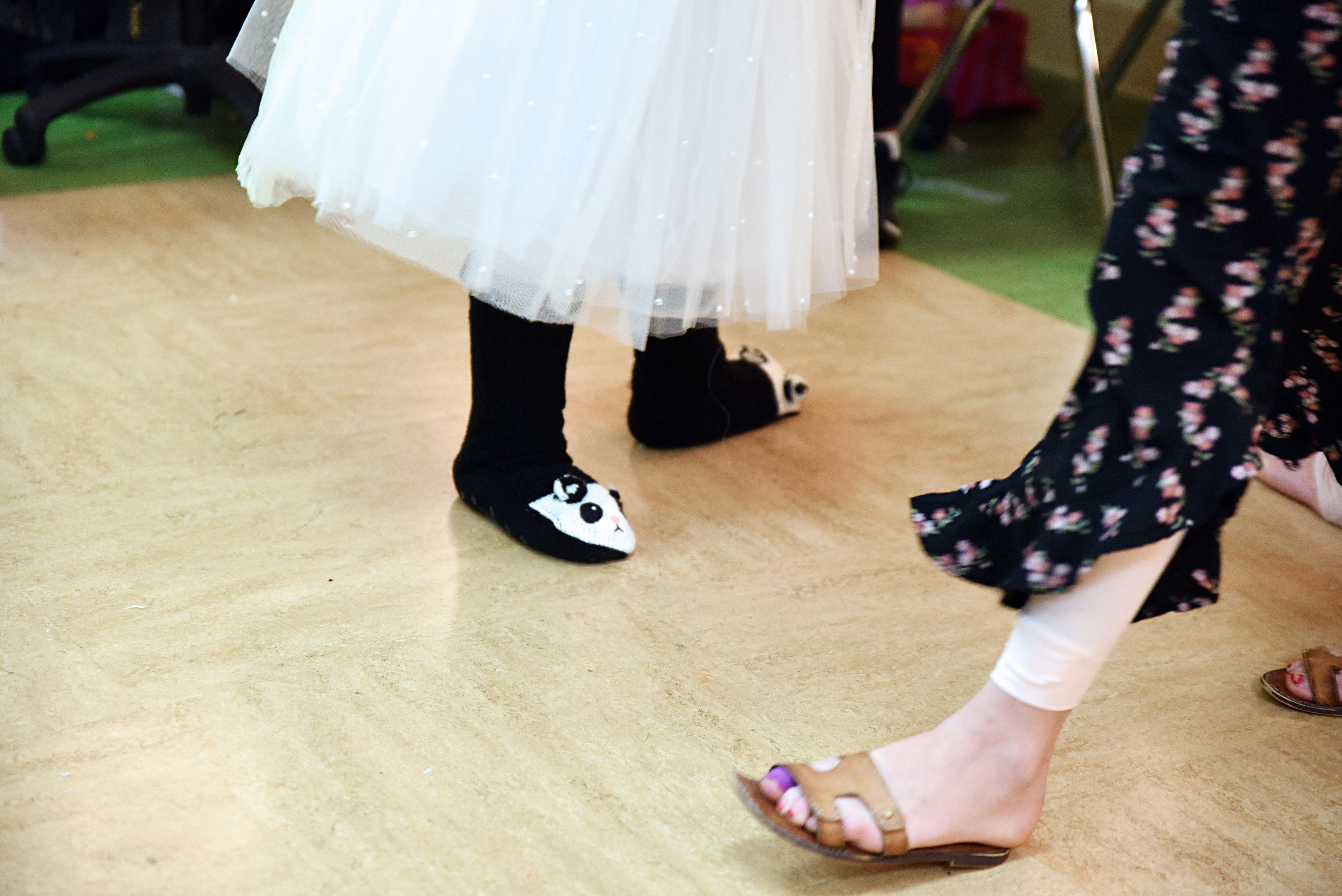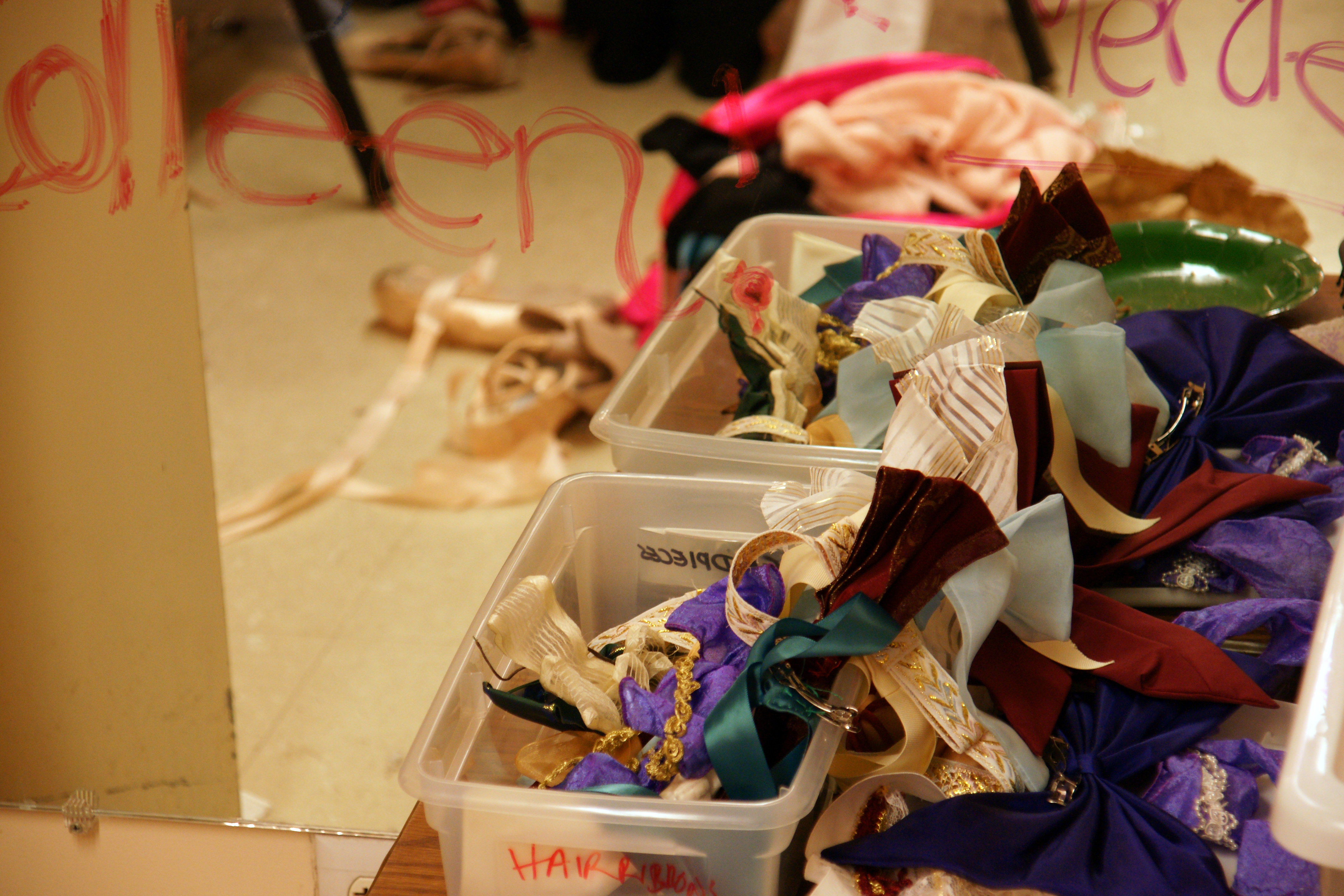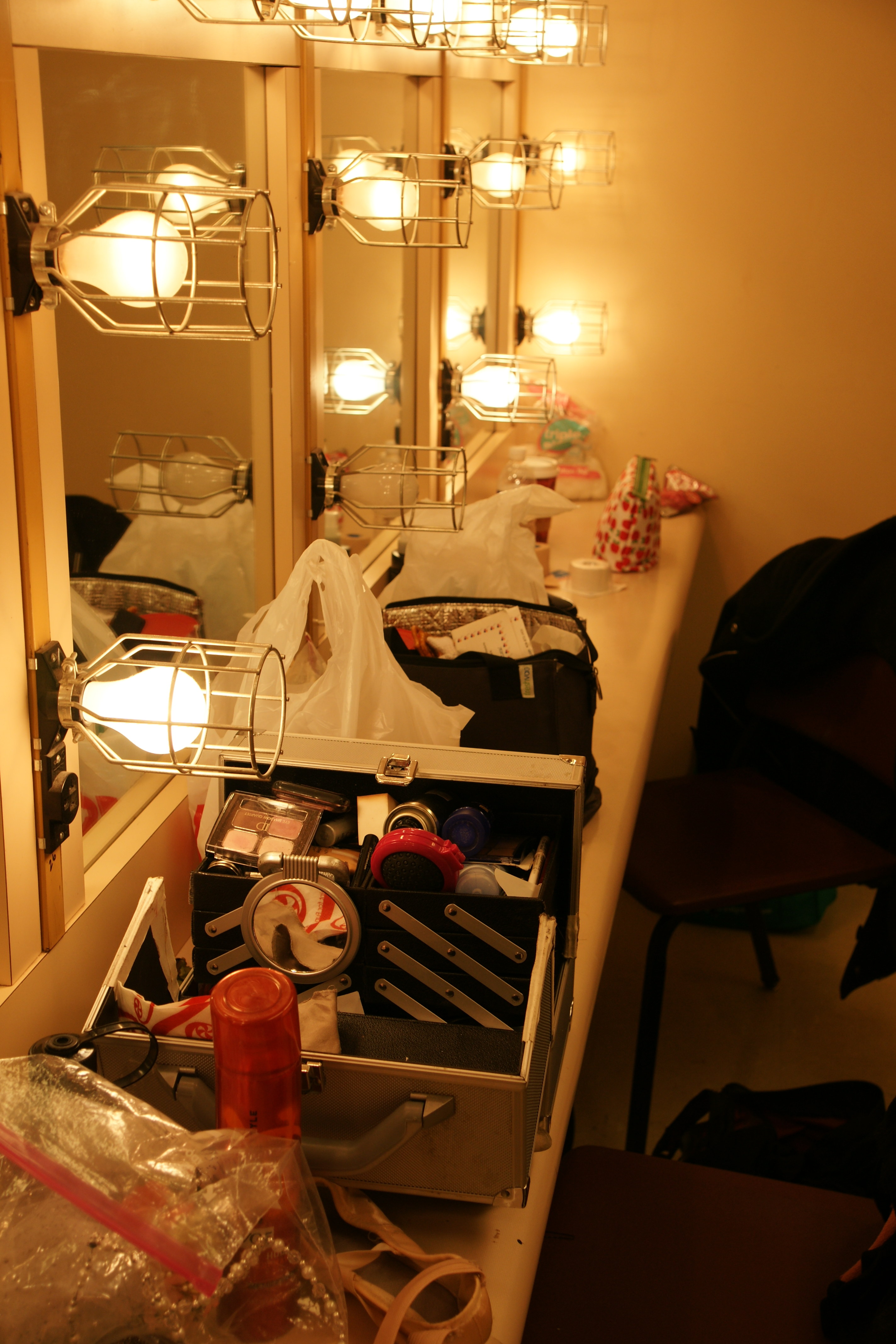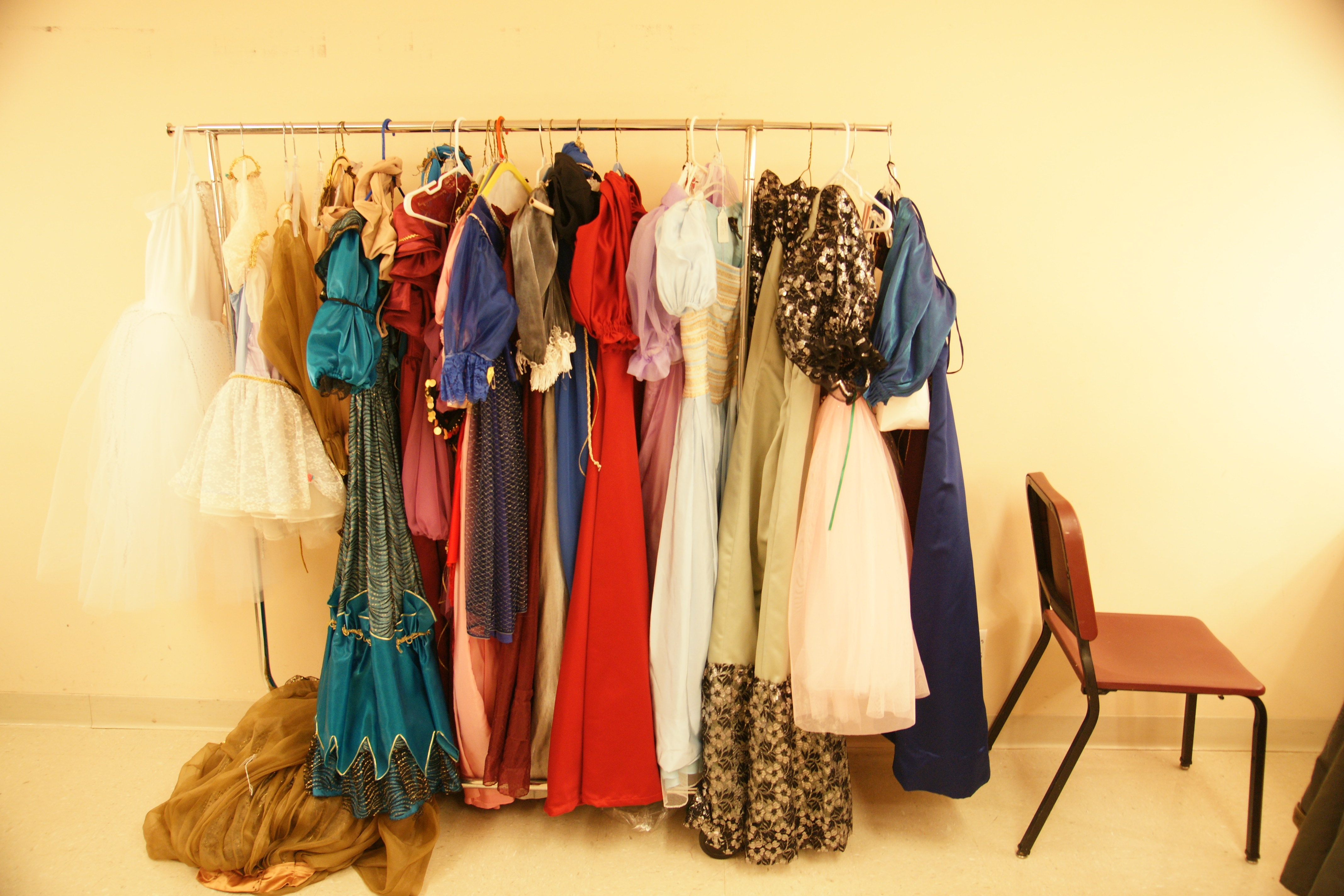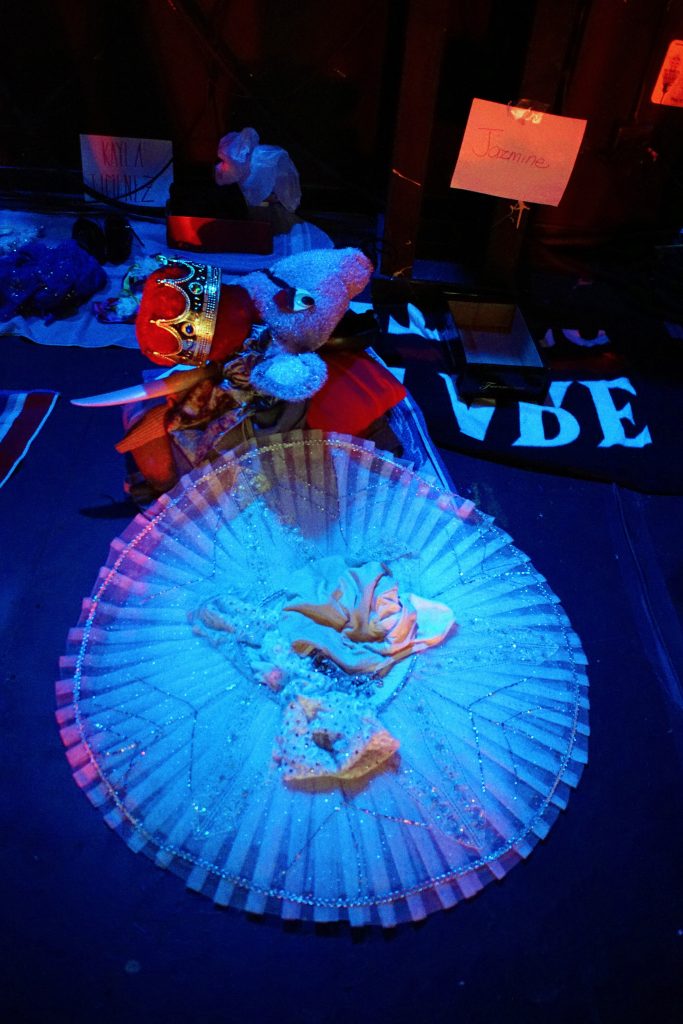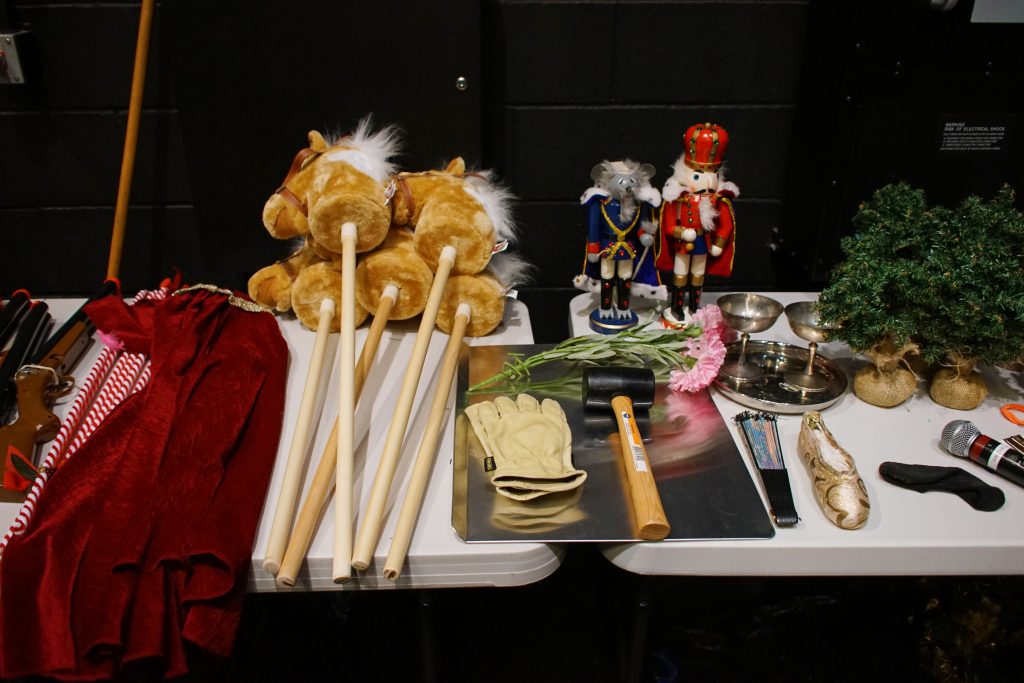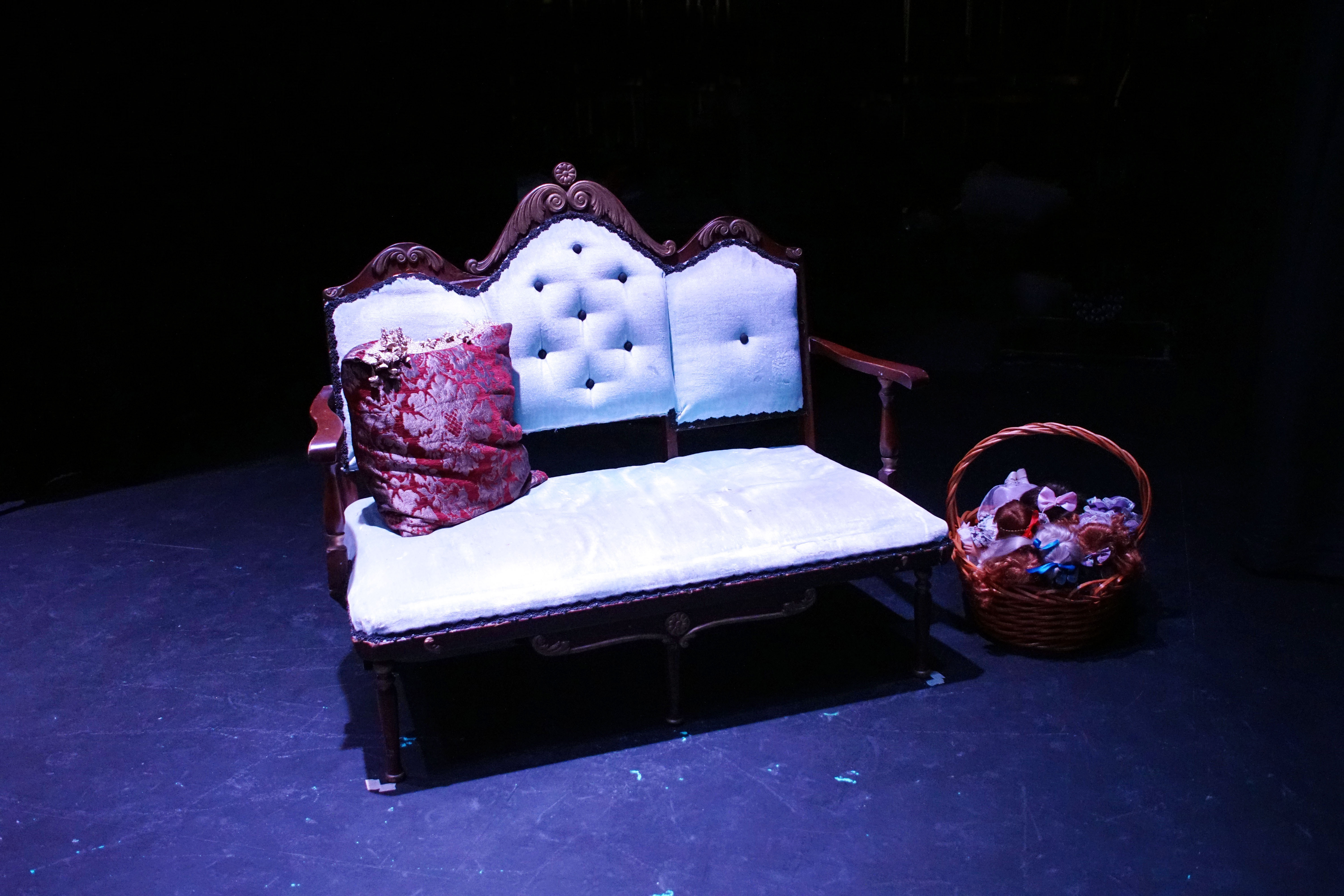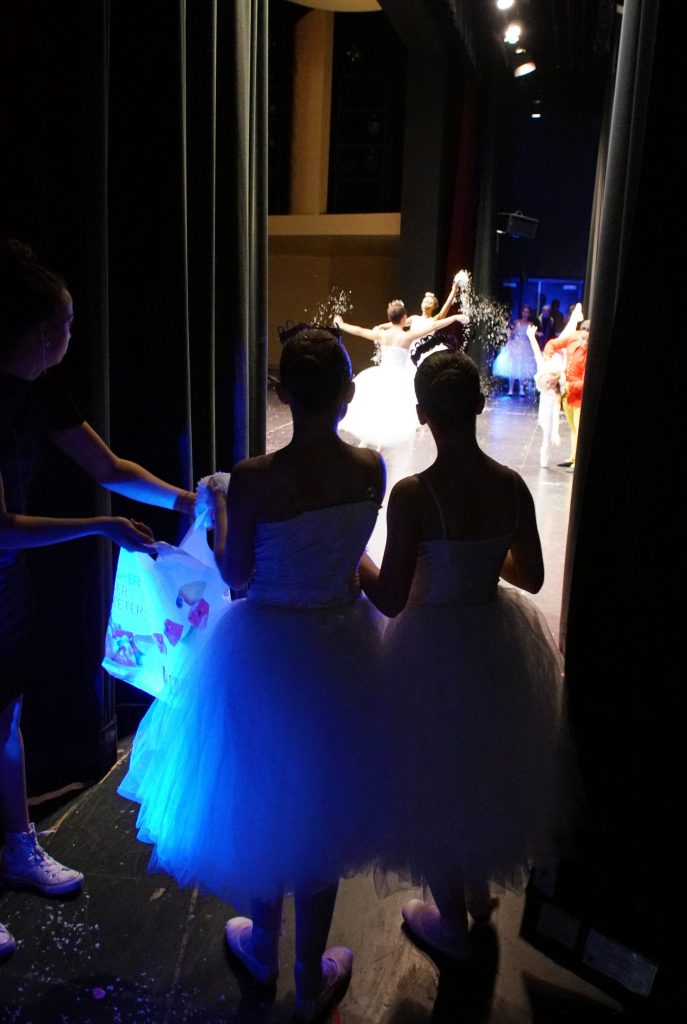For years, we have been involved in the dance community both as volunteers and as dancers. We regularly perform in The Nutcracker in the party scene, where adults can be on-stage in a professional ballet without being professional ballet dancers. In addition, we help backstage where there is always A LOT of props to set, dancers needing help with costumes, set changes, and more. Plus, someone (yours truly) has to take photographs.
And we are going to share these experiences with you.
While it’s common knowledge that everything is beautiful at the ballet, when we are backstage, there are expectations of privacy, so discretion will be used.
This is a photograph of me taking a photograph. Indiscreet, but okay. 🙂
The day before the performance (and sometimes the morning of the performance), there is a dress rehearsal. The allows to dancers to gauge how much time is needed for costume and make-up changes.
A dance stage is covered with marley and the dancers put rosin on the platform of their shoes to help prevent slipping.
There is a technique to tying pointe shoes, and each ballerina finds the method that works best for her.
You can see in this gallery more pointe shoes and the feet that wear them. You might notice that some of them look worn; pointe shoes wear out quickly, usually lasting less than 12 hours of usage.
This is not the usual way to store ballerinas but, in a pinch, it will do nicely.
Before a show, dancers stretch. And when you are a ballet dancer, you need at least six feet of wall to accomplish that.
Yup, there are ballerinas backstage stretching everywhere.
Notice the socks: dancers keep their feet as warm as they can. Cold feet mean pulled muscles.
We have a slide show of a few more dancers for you to enjoy.
At this point, you are probably wondering, “So, why do they call ballerinas ‘bunheads’?”
It’s not an insult. Normally, a ballerina’s hair is in a tight bun, and free-flowing hair you see is a wig. (Not always, but typically.)
In fact, when dancers pirouette, there is a danger of hair strands striking the dancer’s eyeball and causing injury. Thus, spinning dancers put their hair in a bun for their own safety.
If hair is not in a bun, that’s a good indication that the dancer won’t be spinning. Please enjoy this slideshow of different hair styles.
How do dancers get all that energy? What do they eat?
As with many people, ballet dancers will sometimes drink large quantities of hot bean juice.
When you take dance lessons for hours every day AND you are young, you can eat anything you want…which ballet dancers do.
When performing, dancers need all the energy they can get. Especially in the form of cookies.
You can never have too many sweets, amirite?
What is it like in the dressing room? Every dancer has a spot to keep make-up, costumes, and personal items, right?
Wrong. There is never enough room for all the dancers and all the costumes, props, make-up, and personal articles. Despite appearances to the contrary, however, dancers know where all their things are in the dressing room.
Dancers personalize the space to make it feel a little more like home.
And there’s nothing like a rose in a bread bag to let you know you are loved.
Dancers need quick access to their costumes, so it’s not uncommon for costumes to take over the dressing room.
Every performance is different and every dressing room is different.
Props and costumes are necessarily neat and organized so the dancers have no problems finding them during a performance.
When dealing with many children (such as happens in The Nutcracker), it can happen that efforts to organize are not as successful as one would hope…which is why kid-wranglers are always in demand backstage during Nutcracker performances.
Where there are many dancers and not enough space, the dancers will bring towels on which to organize their costumes and props in the wings.
Typically, props are organized to ensure that they are all present and accounted for. There might be serious problems if an item cannot be located during a performance.
Awwww, aren’t they cute?
We’ve included a few more photographs of props for your enjoyment. 🙂
Not quite backstage, but rather behind the audience, are the folks who ensure the lights and sound work correctly. They are among the unsung heroes of performances; there would be no show without them.
The technical crew ensures props are set and dancers are ready before the curtain is opened.
If you are on-stage and look up, you’ll see a dizzying collection of lights, wires, and cables, all necessary to provide a high-quality production.
Watching the performance from the wings is an opportunity to see what is really happening. More than once, we’ve seen a dancer perform splendidly, dancing into the wings. Once in the wings, the dancer begins hyperventilating to quickly restore normal breathing. A quick check to ensure costuming is in order, then back on stage, smiling grandly at the audience.
The dancers you see, perfectly illuminated, are surrounded by bright lights. The audience can be seen by the dancers, but not clearly.
When a dancer exits with a prop, such as a large head, the technical crew is standing by to assist, ensuring the prop is returned to its proper location.
A shopping bag provides a temporary container for plastic snow, which the dancers will toss about on stage.
The crew and the dancers watch from the wings, waiting for the cue to dance about and fling their snow into the air.
Big, messy scenes are glorious, and they always happen at the end of an act so that the curtain can close, giving the crew time to clean the stage.
We’ve included a few photographs of us, for your viewing pleasure. 😀
We hope you’ve enjoyed our quick excursion into the world of ballet, into the magic that happens backstage. Happy new year!


